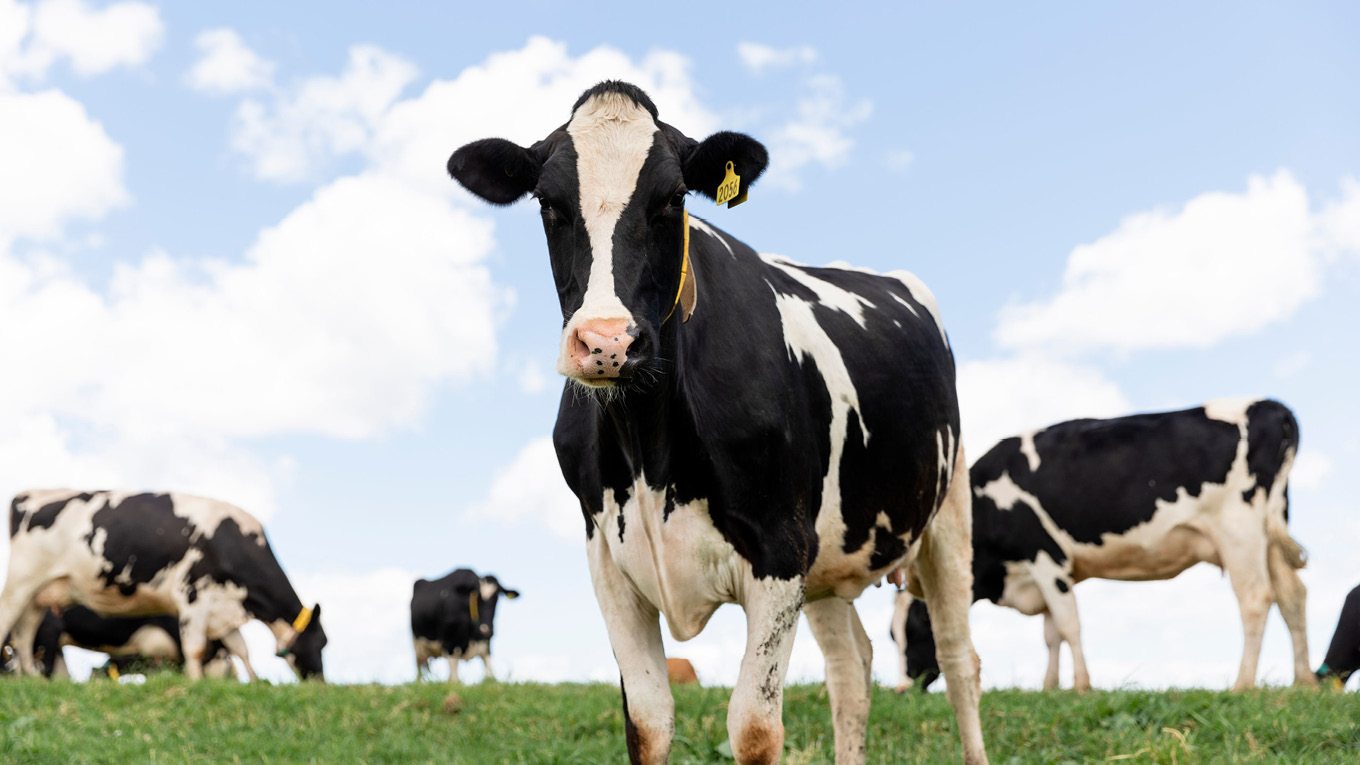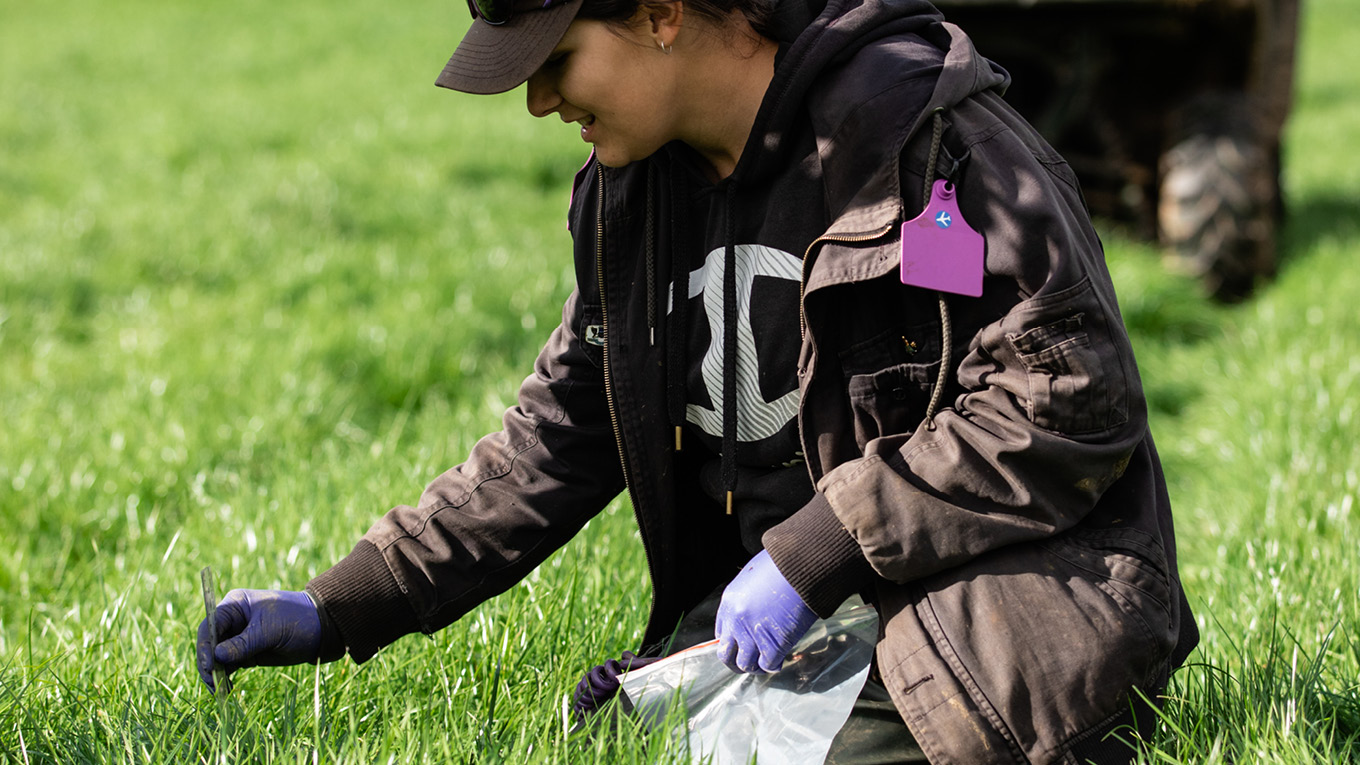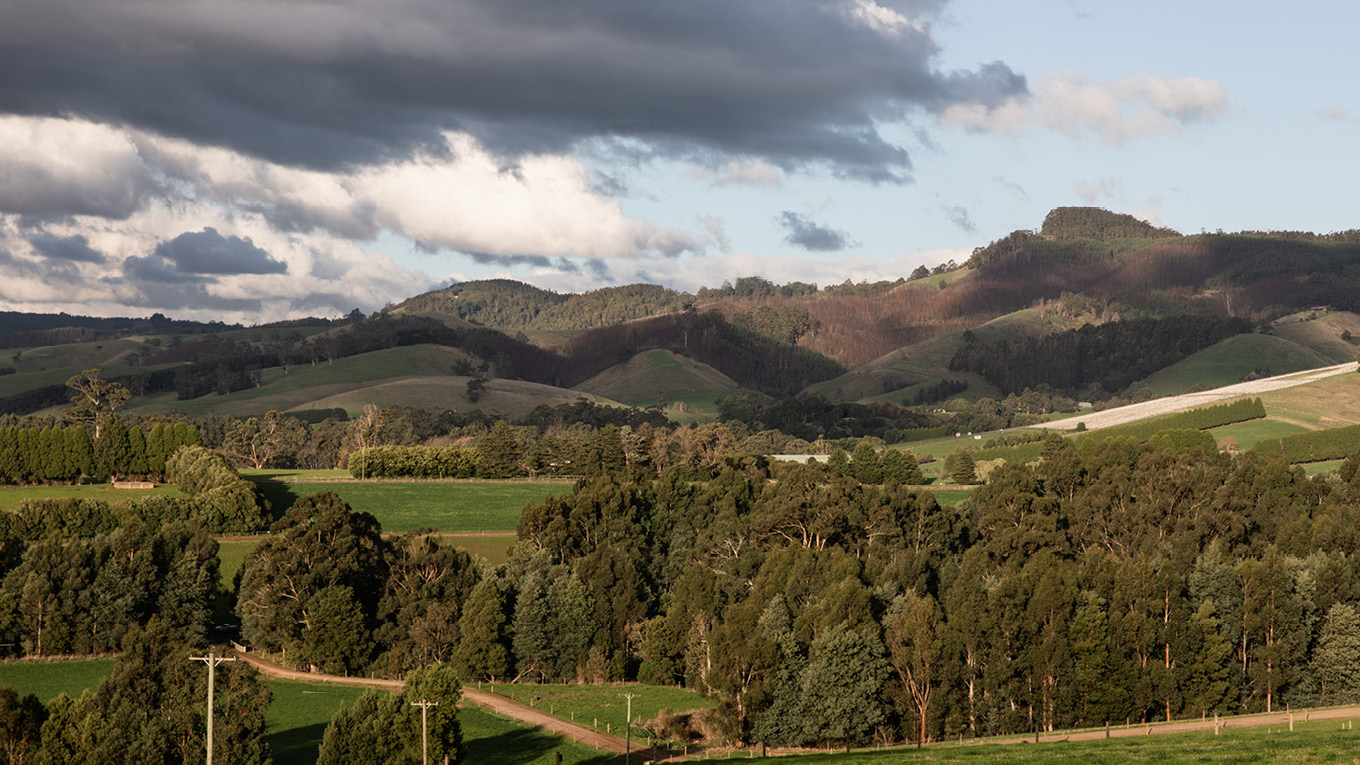Saving water on-farm
Dairy farmer surveys have indicated that the most efficient dairy sheds use under 2,000 litres of water per cow each year. At the other end of the scale, the most water used was 38,000 litres per cow each year, almost 20 times more than the best performers.
Selecting the best irrigation system
Research has been conducted to help farmers and catchment planners make decisions about when to invest in pressurised, surface or subsurface drip irrigation. This research has been captured in Agriculture Victoria's Irrigation System Selection and Design Guidelines.
Saving water in the dairy
There are number of options for dairy farmers looking to save water in the dairy.
Water savings options by cost
High cost to implement
- Nutrition – feed adequate fibre
- Alternative (bore) water supply
- Re-use water from effluent ponds
- Concrete surface and grooving
- Yard slope
- Gate scrapers and auto-flushing
- Flood wash – riser systems
- Flood wash – tank systems
- Store and re-use plate cooler water
- Re-use detergent wash
- Drink from troughs
- Stop leakage from dams
Low cost to implement
- Wake-up cows first
- Stock handling
- Voluntary cow flow into dairy
- Reduce the time they spend on the yard
- Mud and stone trap at laneway-yard junction
- Wash section closest to the shed only
- Wash yard less frequently
- Hose nozzles
- Manual scrapers
- Tipping drums
- Sprinklers
- Dribble bars
- Optimise heat exchange
- Curb operation of plate cooler water pump
- Enhance vat cleaning
- Check plant wash regime
- Increase turbulence
- Re-use final rinse water
- Strategically wash platform
- Use gloves to clean rubberware and pipework
- Use cow ankle straps on pipework
- Wet surfaces prior to milking
- Use low pressure hoses
- Strategically wash teats
- Dry wipe teats
- Use trigger nozzles on udder hoses
- Fix leaking troughs
- Reduce evaporation from water storages
Moderate cost to implement
- Divert and use rainwater from yards
- Yard drainage
- Solids trap for re-use systems
- Short, high-volume hoses
- Mechanical scrapers
- Hydrant wash systems
- Tailor water to milk flow
- Recycle water for other dairy processes
- Install 'non-stick' surfaces in the dairy
- Catch rain water from shed roof
Water savings options by effort
High effort to implement
- Re-use water from effluent ponds
- Divert and use rainwater from yards
- Concrete surface and grooving
- Yard slope
- Yard drainage
- Manual scrapers
- Drink from troughs
- Stop leakage from dams
Low effort to implement
- Wake-up cows first
- Stock handling
- Alternative (bore) water supply
- Wash section closest to the shed only
- Wash yard less frequently
- Hose nozzles
- Hydrant wash systems
- Flood wash – riser systems
- Flood wash – tank systems
- Curb operation of plate cooler water pump
- Recycle water for other dairy processes
- Store and re-use plate cooler water
- Enhance vat cleaning
- Check plant wash regime
- Increase turbulence
- Strategically wash platform
- Use gloves to clean rubberware and pipework
- Install 'non-stick' surfaces in the dairy
- Use cow ankle straps on pipework
- Wet surfaces prior to milking
- Use low pressure hoses
- Strategically wash teats
- Dry wipe teats
- Use trigger nozzles on udder hoses
- Fix leaking troughs
- Reduce evaporation from water storages
Moderate effort to implement
- Reduce the time cows spend in the yard
- Nutrition – adequate fibre
- Voluntary cow flow into dairy
- Mud and stone trap at laneway-yard junction
- Solids trap for re-use systems
- Short, high-volume hoses
- Mechanical scrapers
- Gate scrapers and auto-flushing
- Tipping drums
- Sprinklers
- Dribble bars
- Optimise heat exchange
- Tailor water to milk flow
- Re-use final rinse water
- Re-use detergent wash
- Catch rain water from shed roof
Water saving options by water saved
High water savings
- Alternative (bore) water supply
- Wash yard less frequently
- Re-use water from effluent ponds
- Divert and use rainwater from yards
- Recycle water for other dairy processes
- Store and re-use plate cooler water
- Re-use detergent wash
Low water savings
- Wake-up cows first
- Nutrition – adequate fibre
- Voluntary cow flow into dairy
- Mud and stone trap at laneway-yard junction
- Yard drainage
- Solids trap for re-use systems
- Gate scrapers and auto-flushing
- Hydrant wash systems
- Flood wash – riser systems
- Flood wash – tank systems
- Tipping drums
- Sprinklers
- Dribble bars
- Curb operation of plate cooler water pump
- Enhance vat cleaning
- Check plant wash regime
- Increase turbulence
- Re-use final rinse water
- Install 'non-stick' surfaces in the dairy
- Use cow ankle straps on pipework
- Wet surfaces prior to milking
- Use low pressure hoses
- Strategically wash teats
- Dry wipe teats
- Use trigger nozzles on udder hoses
- Fix leaking troughs
- Reduce evaporation from water storages
Moderate water savings
- Reduce the time cows spend in the yard
- Stock handling
- Wash section closest to the shed only
- Concrete surface and grooving
- Yard slope
- Short, high-volume hoses
- Hose nozzles
- Manual scrapers
- Mechanical scrapers
- Flow rate/cooling efficiency
- Tailor water to milk flow
- Strategically wash platform
- Use gloves to clean rubberware and pipework
- Drink from troughs
- Stop leakage from dams
- Catch rain water from shed roof
Other options for reducing water use
The section below details some alternative options for reducing water use on-farm.
Alternative bore water supply
Having a back-up supply of water from a bore is very handy. Bore water can be used to supply yard wash water directly or mixed with re-used yard wash water destined for disposal.
In many areas, the temperature of bore water is constant throughout the year (about 16 to 18 degrees Celsius), meaning bore water can be used to supply the pre-cooler too.
Cost
Set-up costs for bore water are high:
- Bore – about $5,000
- Submersible bore pump – between $2,000 and $5,000
- Tank – $3,500
- Electrical and piping – $1,000
Licensing from the water authority is generally required to construct a bore and then use water from a bore for dairy wash down.
One way to save some money when using bore water is to fill the header tank on off-peak power or via a windmill.
Pros and cons
Pros
- Permanent fix which could be used for other purposes if water quality allows
Cons
- Corrosion of pumps
- Cost
- Access to ground water
- Quality of water to spread on pasture
- Can stain yards
Issues to consider
Milk quality
- Nil, unless used to wash plant too.
Environment
- Nil - may help reduce salinity of effluent discharge.
Divert and use rainwater
The yard can catch a huge amount of rainwater, which can roughly be calculated as the annual rainfall (millimetres) multiplied by the area of the yard (square metres) over the year. This must be stored or pumped if it is not diverted away prior to entering the effluent system.
Diverters intercept waterflow between the yard and sump. Metal bridge or valve types are available. Diverters are particularly useful in high-rainfall zones where yards are cleaned twice daily. Collected rain water is suitable for washing yards.
Getting the best result
Diverters are easy to install if there is one drainage point from the yard. A large sump is needed and it is best if gravity can be used for rainwater diversion.
Pros and cons
Pros
- Reduces effluent volume
- Improves effluent digestion
- Captures water for other uses
- Can be manually operated or by air ram
Cons
- Separate storage required for rain water
- Only works if the yard is cleaned between milkings
Issues to consider
Labour
- Remembering to change value if it is manual control
Environment
- Should reduce effluent storage problems
Re-using water from effluent ponds
Water can be pumped from the second or third effluent pond and stored for use in high-flow rate yard cleaning systems. This method is commonly used for flood wash and hydrant wash systems with few problems.
Cost
The cost of setting up these systems very much depends on where the effluent ponds are situated. All together, ponds, pipes, a tank and effluent pump can cost between $20,000 and $25,000.
Using raw or untreated effluent can make yards very slippery and increases odour. For a single pond system, a pontoon and a pond stirrer will also be required if crusting is an issue.
Getting the best result
Water can be pumped into a storage tank overnight and used to feed the wash pump.
If there is no crusting of the pond, avoid using the pond stirrer when pumping water for yard washing. Use an effluent pump for this purpose, not a water pump.
Avoid using the recycled water close to or inside the dairy and shandy fresh water in with reused water to control salt levels.
Pros and cons
Pros
- Water availability
Cons
- Nutrient and salinity build up in re-used water, particularly in hotter climates
- Smell can be an issue and concrete can get slippery
Issues to consider
Labour
- Although few problems have been reported, there is the potential for occupational health and safety risks if effluent water is used in systems that create aerosols, such as hydrant
- wash
- Salinity and nutrient build up in water can cause issues for disposal
- Odour problems also occur.
Animal health
- Nil – as long as concrete is not slippery.
Washing the section closest to the shed only
Limiting the washing to the section of yard closest to the dairy can save water and limit the chances of cows slipping as they enter the dairy. This can be an option if smooth concrete, steps or ramps make using scrapers too risky.
Getting the best result
Use low-pressure/high-flow rate hoses and give the whole yard a thorough hosing regularly to wash away the solids and keep drains open. Calm stock handling is important to limit injuries to cows and dirty udders.
This method works best if a scraper can be used first to remove most of the muck.
Pros and Cons
Pros
Makes for a short clean-up time
Cons
Care needs to be taken so drains and pumps do not block up
Issues to consider
Labour
- May increase time to clean teats but will decrease wash up time.
Animal health
- Small increase in mastitis risk.
Milk quality
- Small increase in sediment risk.
Environment
- Semi-solid waste build up, flies, drains
Wash yard less frequently
In some situations, the frequency of yard washing can be reduced substantially. Periodic hosing is supplemented by using mechanical scrapers to remove most of the dry solids. For this to be successful, the cows need to have good footing on the concrete through a dimpled or cobbled pattern. Careful stock handling and use of a backing gate will minimise slips and injuries.
In drier times, farmers have reported scraping the yard every one to three weeks, only giving it a complete clean when rain can soften the built up manure before a complete hose down.
Getting the best result
Drains should be covered and the drier solids scraped away, while remaining solids can be broken up. The yards can then be pre-wet before flushing the remainder with a high-flow rate wash.
The manure will be less of a hazard if the water can evaporate or drain away. Having dry weather and a yard slope of 2–3% will help.
Pros and cons
Pros
- Low-cost option which may save time.
Cons
- Care is required to preserve drains, pumps and manure distribution pipes
- Yards may become very slippery
- Stores of semi-solid waste must drain to effluent
- Time required to spread waste
Issues to consider
Labour
- Saves time but may increase OH&S risks
- May increase time required to clean teats
Animal health
- May increase mastitis if cows splash udders
- Risks of slips and falls is increased
Milk quality
- May increase sediment if cows splash udders
Environment
- Potentially reduce effluent volume and dilution


